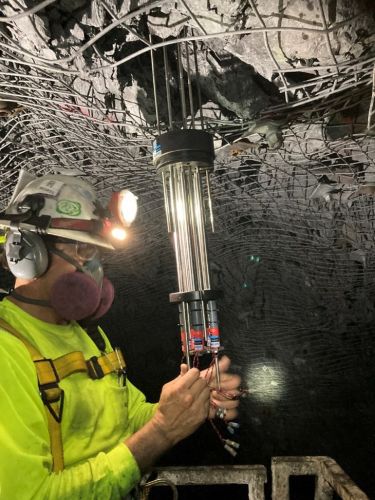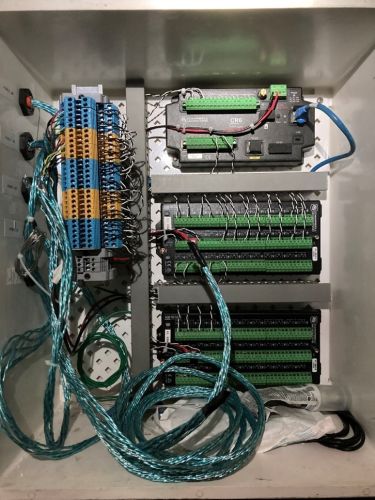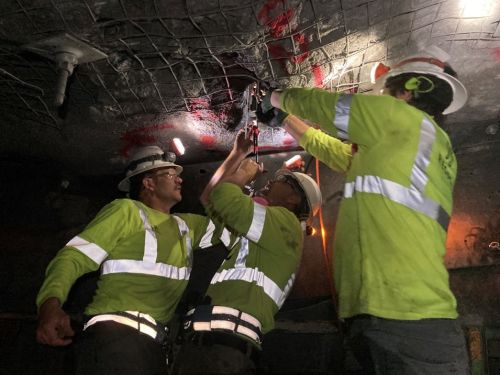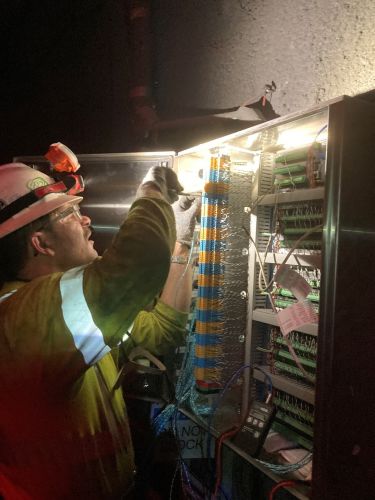Putting People First: Crafting Cost-Effective Solutions with Campbell Scientific
by Michael Adams | Updated: 05/07/2024 | Comments: 0
Who doesn’t want an infrastructure solution that has a low cost of ownership through flexibility and expandability? This aspect is crucial in every decision we make, as it directly impacts the value we bring to our customers.
At Campbell Scientific, our guiding principles revolve around putting people first and delivering professional-grade solutions. We prioritize product reliability, longevity, and precision in measurements, along with ensuring long-term stability and providing exceptional customer support tailored to our clients' needs.
In this blog article, we'll delve into the core competency of cost effectiveness, which is central to our product discussions when it comes to your infrastructure projects.
In a recent case study, the contracted integrator (RESPEC) deployed a combination of Campbell Scientific CR6 devices and CR1000X dataloggers paired with fourteen multiplexers. While this may seem like a technical detail to some, it underscores our commitment to efficiency and adaptability—a distinction that resonates strongly with Campbell Scientific and our knowledgeable user base.

This focus on cost-effectiveness through versatile and scalable solutions is what distinguishes us from many other manufacturers of data-acquisition and instrumentation systems, solidifying our position as a leader in the field.
The case study highlighted the use of 64 multi-point borehole extensometers (MPBX), each spanning 10.1 to 19.8 m (33 to 65 ft) long and featuring four to five measurement points. With four measurement sections, this amounted to 256 vibrating wire measurements, while five sections yielded 320 measurements. Adding the internal thermistor measurements doubled these figures, showcasing the impressive capabilities of these systems. Additionally, the study mentioned the deployment of two In-Place Inclinometer (IPI) strings, each equipped with 14 inclinometers. Again, these added to the array of vibrating wire sensor measurements.

This highlights a crucial point: employing individual nodes for systems of this magnitude would necessitate hundreds of separate measurement devices. Instead, our use of AM16/32B multiplexers in this application proved instrumental. By connecting several multiplexers to each data logger, we not only reduced project expenses but also demonstrated the expandability of Campbell Scientific data loggers. We're dedicated to ensuring a low cost of ownership for our clients, a principle that remains at the forefront of our approach.

Why replace products when you need to expand your measurement capabilities? It’s more advantageous to allocate your resources toward augmenting our products rather than investing in competitors' single-function solutions.
Consider the AM16/32B multiplexer, priced at approximately one-fifth of the data logger's cost. This reinforces the concept of "low cost of ownership," a mantra we prioritize. By keeping the CR6 or CR1000X dataloggers as the core of your system—maintaining the renowned accuracy and reliability we're known for—it becomes highly cost effective to expand your data-acquisition capabilities using the AM16/32B multiplexer.

Depending on the type of data logger, adding several AM16/32B multiplexers is a straightforward process through our Short Cut Program Generator for Windows. If you anticipate future expansion requirements for any of your project sites, consider the simplicity and cost-effectiveness of integrating AM16/32B multiplexers into your system.
Allow us to demonstrate the robustness of our expandability and the versatility of owning Campbell Scientific data loggers and instrumentation products. At Campbell Scientific, we're committed to delivering professional-grade solutions that prioritize people, reliability, and cost-effectiveness. Our focus on achieving a low cost of ownership through flexibility and expandability sets us apart in the field of data acquisition and instrumentation systems.
The South Dakota mine expansion project case study exemplifies our dedication to efficiency and adaptability and showcases how our solutions can streamline operations and reduce project costs.
If you're anticipating future expansion requirements for your infrastructure projects, we encourage you to explore the versatility and robustness of our products. Reach out to our application engineers or sales team members if you’d like more information on our products and how we can help you.
If you have any questions or comments, please post them below or reach out to our infrastructure team at CSI-Infrastructure@campbellsci.com or our sales team at infra-sales-na@campbellsci.com.















 Michael Adams is a Senior Applications Engineer at Campbell Scientific, Inc. He has a degree in Electronic Systems, which he has applied for more than 30 years in system design, field deployment, and system longevity/reliability—with a strong focus on instrumentation and field troubleshooting. When he's not working, Michael can be found cycling, skiing, or flyfishing.
Michael Adams is a Senior Applications Engineer at Campbell Scientific, Inc. He has a degree in Electronic Systems, which he has applied for more than 30 years in system design, field deployment, and system longevity/reliability—with a strong focus on instrumentation and field troubleshooting. When he's not working, Michael can be found cycling, skiing, or flyfishing.
Comments
Please log in or register to comment.